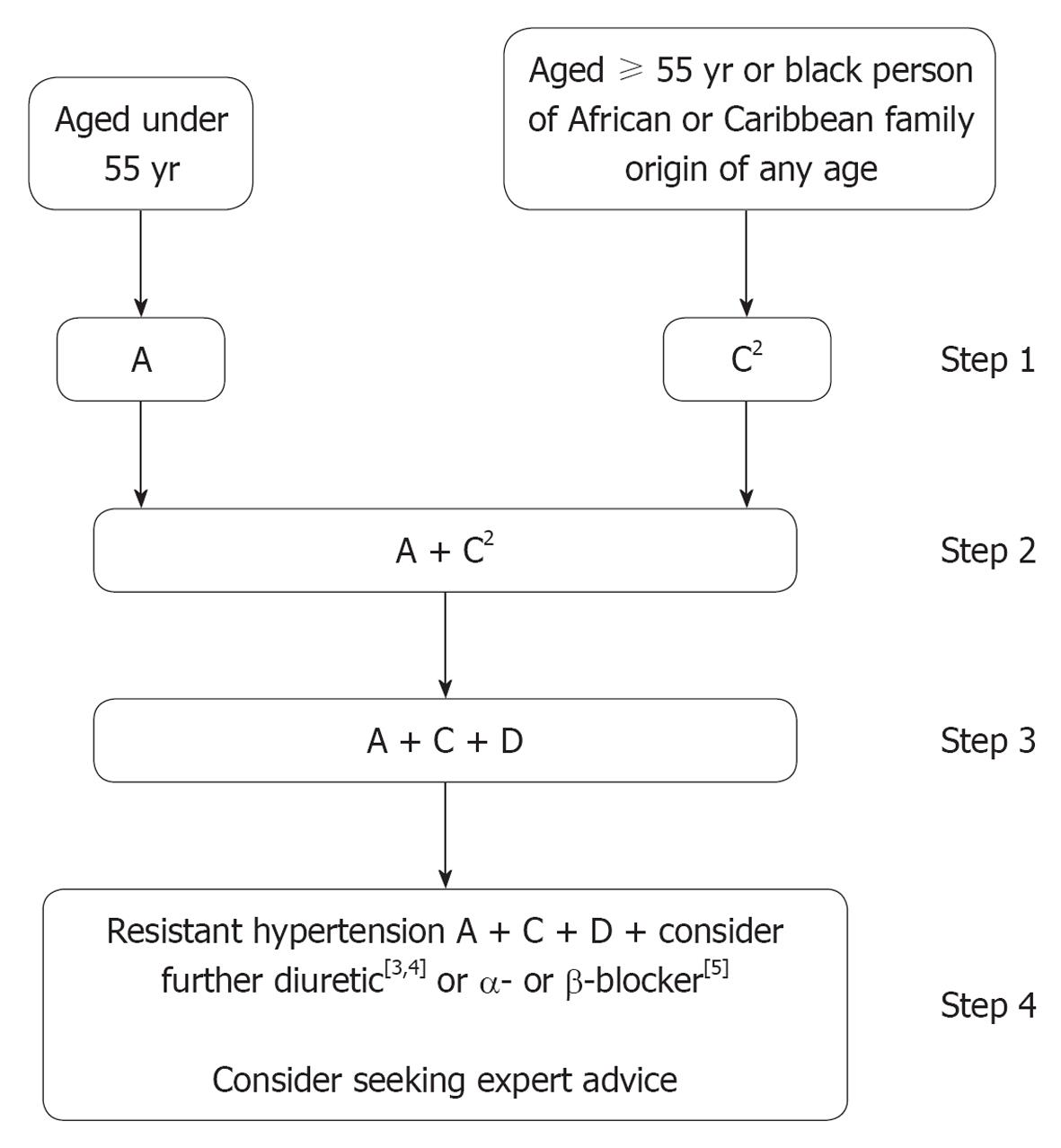Copyright
©2012 Baishideng.
World J Hypertens. Oct 23, 2012; 2(5): 45-49
Published online Oct 23, 2012. doi: 10.5494/wjh.v2.i5.45
Published online Oct 23, 2012. doi: 10.5494/wjh.v2.i5.45
Figure 2 Summary of antihypertensive drug treatment[3].
A: Angiotensin-converting enzyme inhibitor or low-cost angiotensin II receptor blocker (ARB)[1]; C: Calcium-channel blocker (CCB); D: Thiazide-like diuretic (1) Choose a low-cost ARB; (2) A CCB is preferred but consider a thiazide-like diuretic if a CCB is not tolerated or the person has oedema, evidence of heart failure or a high risk of heart failure; (3) Consider a low dose of spironolactone[4] or higher doses of a thiazide-like diuretic; (4) At the time of publication (August 2011), spironolactone did not have a UK marketing authorisation for this indication. Informed consent should be obtained and documented; and (5) Consider an α- or β-blocker if further diuretic therapy is not tolerated, or is contraindicated or ineffective.
- Citation: Cheung BMY, Cheung TT. Nice new hypertension guidelines. World J Hypertens 2012; 2(5): 45-49
- URL: https://www.wjgnet.com/2220-3168/full/v2/i5/45.htm
- DOI: https://dx.doi.org/10.5494/wjh.v2.i5.45









